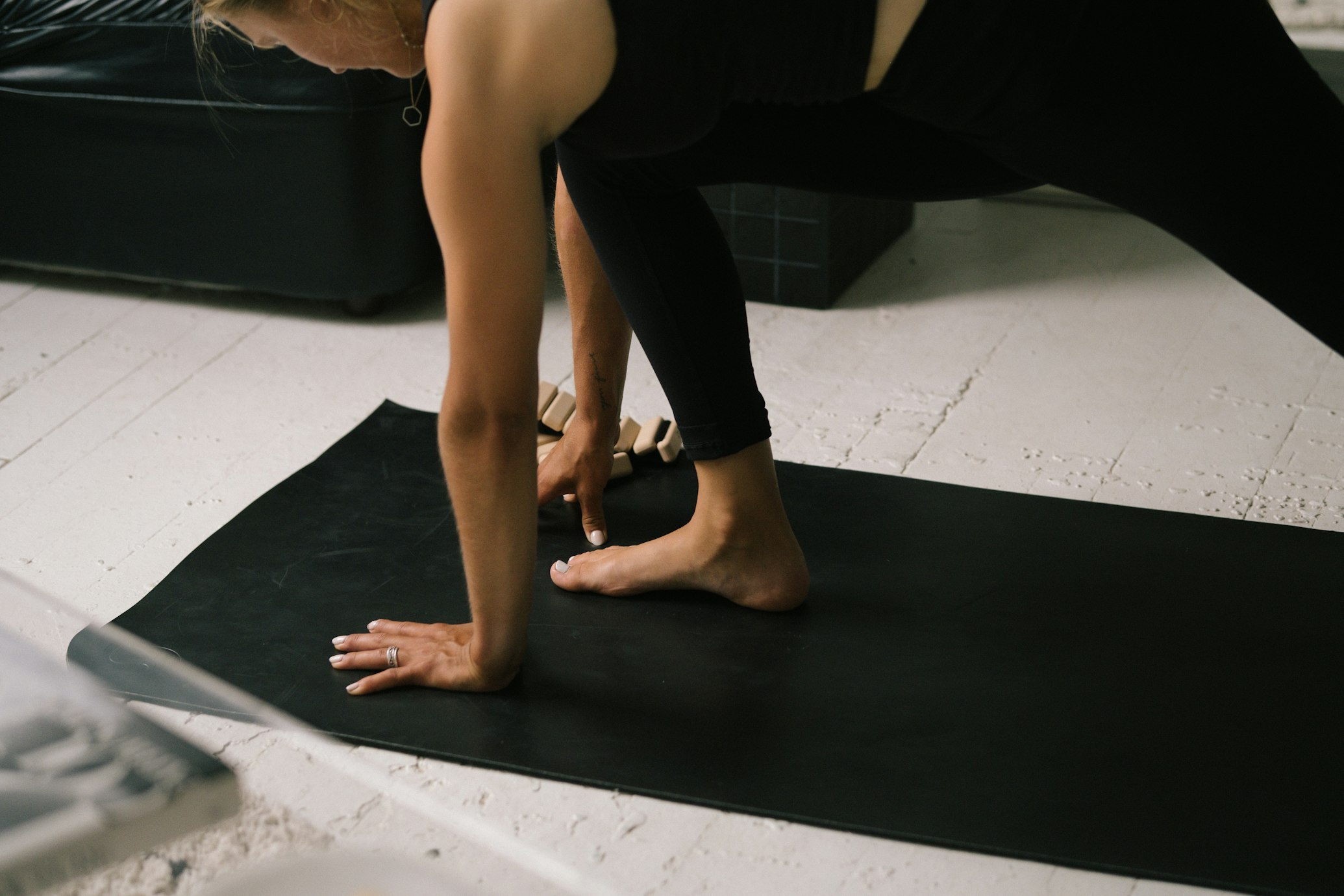The Science of Muscle Recovery: Why Rest Days Make You Stronger

The Recovery Paradox: Getting Stronger While Resting
Here’s a counterintuitive truth that many fitness enthusiasts struggle to accept: you don’t get stronger during your workout – you get stronger during recovery.
Exercise creates controlled damage to your muscle fibers, and it’s during the repair process that your body builds back stronger tissue. This phenomenon, called supercompensation, is the foundation of all fitness adaptation.
The Numbers Don’t Lie:
- Muscle protein synthesis peaks 24-48 hours post-exercise
- Growth hormone release is 10x higher during deep sleep
- Proper recovery can improve performance by 15-25%
- Inadequate rest increases injury risk by 70%
🔬 What Happens During Muscle Recovery
Phase 1: Inflammatory Response (0-72 hours)
What’s Happening:
- Micro-tears in muscle fibers trigger inflammatory signals
- White blood cells flood the area to clear damaged tissue
- Satellite cells activate to begin repair process
- Blood flow increases to deliver nutrients and remove waste
Why You Feel It:
- Delayed onset muscle soreness (DOMS) typically peaks 24-72 hours post-exercise
- Temporary strength decrease as your body prioritizes repair
- Elevated body temperature from increased metabolic activity
Phase 2: Repair and Adaptation (2-7 days)
Cellular Level Changes:
- Protein synthesis ramps up to rebuild stronger fibers
- Mitochondria increase in number and efficiency
- Capillary density improves for better oxygen delivery
- Neural pathways strengthen for improved movement patterns
Hormonal Orchestra:
- Growth hormone: Peaks during deep sleep, promotes tissue repair
- IGF-1: Stimulates muscle growth and regeneration
- Testosterone: Enhances protein synthesis and recovery
- Cortisol: Initially elevated (stress response), should normalize with proper rest
💤 Sleep: The Ultimate Recovery Tool
The Growth Hormone Connection
During Deep Sleep (Stage 3-4):
- 80% of growth hormone is released during slow-wave sleep
- Muscle protein synthesis increases by 50%
- Inflammatory markers decrease significantly
- Neural recovery and memory consolidation occur
Sleep Quality vs. Recovery Performance
Research Findings:
- 7-9 hours optimal for athletic recovery
- Sleep deprivation reduces protein synthesis by 18%
- Poor sleep quality increases injury risk by 1.7x
- Sleep extension improves performance by 11-17%
Recovery Sleep Optimization:
- Cool bedroom (65-68°F) enhances deep sleep
- Dark environment maximizes melatonin production
- Consistent schedule regulates recovery hormones
- No screens 1 hour before bed protects sleep quality
🍽️ Nutrition: Fueling the Recovery Engine
The Protein Synthesis Window
Optimal Protein Timing:
- 20-40g protein within 2 hours post-workout
- 3-4 hour intervals throughout the day for sustained synthesis
- 30g protein before bed supports overnight recovery
- 2.2g per kg body weight daily for strength athletes
Recovery Nutrition Science
Leucine: The Muscle Building Switch
- 2.5g leucine threshold activates protein synthesis
- Found in: Whey protein, eggs, chicken, beef
- Peak effectiveness: 1-2 hours post-consumption
Carbohydrates for Recovery
- Replenish glycogen stores depleted during training
- Insulin response enhances protein uptake
- Optimal ratio: 3:1 or 4:1 carbs to protein post-workout
Anti-Inflammatory Foods
- Omega-3 fatty acids: Reduce exercise-induced inflammation
- Antioxidant-rich foods: Combat oxidative stress
- Tart cherry juice: Natural source of melatonin and anti-inflammatory compounds
🧊 Active Recovery: The Science of Strategic Movement
Why Complete Rest Isn’t Always Best
Blood Flow Benefits:
- Light activity increases circulation by 200-300%
- Enhanced nutrient delivery to recovering muscles
- Faster waste product removal (lactate, metabolic byproducts)
- Reduced muscle stiffness and improved mobility
Evidence-Based Active Recovery Methods
Low-Intensity Cardio (50-60% max heart rate):
- 20-30 minutes walking, cycling, or swimming
- Improves recovery by 15-20% compared to complete rest
- Reduces DOMS severity and duration
Dynamic Stretching and Mobility:
- Maintains range of motion during recovery periods
- Activates parasympathetic nervous system (rest and digest)
- Improves movement quality for subsequent workouts
Massage and Foam Rolling:
- Increases blood flow to targeted areas
- Reduces muscle tension and perceived soreness
- May accelerate return to baseline strength levels
📊 Recovery Monitoring: Measuring What Matters
Objective Recovery Markers
Heart Rate Variability (HRV):
- Higher HRV indicates better recovery status
- Consistent monitoring reveals individual patterns
- Training adjustments based on daily HRV readings
Resting Heart Rate (RHR):
- Elevated RHR may indicate incomplete recovery
- 5+ beat increase suggests need for additional rest
- Track morning readings for most accurate data
Subjective Recovery Assessment
Perceived Recovery Scale (1-10):
- Energy levels and motivation to train
- Muscle soreness and joint stiffness
- Sleep quality and mood
- Overall readiness for physical activity
Warning Signs of Overreaching:
- Persistent fatigue and declining performance
- Elevated resting heart rate for 3+ days
- Mood changes and decreased motivation
- Increased susceptibility to illness
🛠️ Recovery Tools: Science-Backed Methods
Heat and Cold Therapy
Cold Water Immersion:
- 10-15 minutes in 50-59°F water
- Reduces inflammation and muscle damage markers
- Accelerates recovery between training sessions
- Best timing: Immediately post-exercise
Heat Therapy (Sauna/Hot Bath):
- Increases blood flow and nutrient delivery
- Promotes relaxation and stress reduction
- Heat shock proteins provide cellular protection
- Optimal: 15-20 minutes at 158-176°F
Compression and Recovery Devices
Compression Garments:
- Graduated compression (15-20 mmHg) most effective
- Improves venous return and reduces swelling
- Wear for 2-4 hours post-exercise for best results
Pneumatic Compression Devices:
- Sequential pressure enhances lymphatic drainage
- 20-30 minute sessions show measurable benefits
- Particularly effective for lower body recovery
🎯 Practical Recovery Optimization Strategies
The 24-Hour Recovery Protocol
Immediately Post-Workout (0-30 minutes):
- Light cooldown activity (5-10 minutes walking)
- Protein + carbohydrate snack
- Begin rehydration process
First 2 Hours:
- Complete nutritional recovery meal
- Begin active recovery activities
- Cold shower or ice bath if available
Evening (8-12 hours post):
- Prioritize quality sleep preparation
- Light stretching or meditation
- Avoid stimulants and screens
Next Day (24 hours):
- Monitor recovery markers (HRV, RHR, subjective feel)
- Adjust training intensity based on recovery status
- Continue hydration and nutrition focus
Weekly Recovery Periodization
High-Intensity Training Days:
- Full recovery protocols activated
- Priority on sleep and nutrition
- Active recovery the following day
Moderate Training Days:
- Standard recovery practices
- Normal daily activities
- Monitor for accumulating fatigue
Planned Recovery Days:
- Complete rest or very light activity
- Focus on lifestyle recovery factors
- Prepare for upcoming training cycle
💡 Key Takeaways for Better Recovery
The Recovery Fundamentals
- Sleep is non-negotiable - 7-9 hours of quality sleep accelerates all recovery processes
- Nutrition timing matters - Strategic protein and carbohydrate intake optimizes adaptation
- Active recovery beats passive rest - Light movement enhances circulation and reduces stiffness
- Individual variation is huge - Monitor your body’s signals and adjust accordingly
- Consistency trumps perfection - Regular good practices outperform sporadic perfect protocols
Common Recovery Mistakes
❌ Training through persistent fatigue
❌ Neglecting sleep in favor of more training
❌ Inadequate protein intake for recovery demands
❌ Ignoring stress management and mental recovery
❌ Using recovery tools without understanding the science
Evidence-Based Recovery Hierarchy
- Sleep Quality and Duration (Highest Impact)
- Proper Nutrition and Hydration
- Stress Management and Mental Recovery
- Active Recovery and Light Movement
- Recovery Tools and Technology (Supportive Role)
Remember: Recovery isn’t just about avoiding injury – it’s about maximizing your body’s adaptive response to training. By understanding and respecting the science of recovery, you’ll not only train more effectively but also enjoy the process more.
Want to optimize your recovery? Start by tracking your sleep quality and establishing consistent nutrition timing. These fundamental changes will provide the biggest return on your recovery investment.




